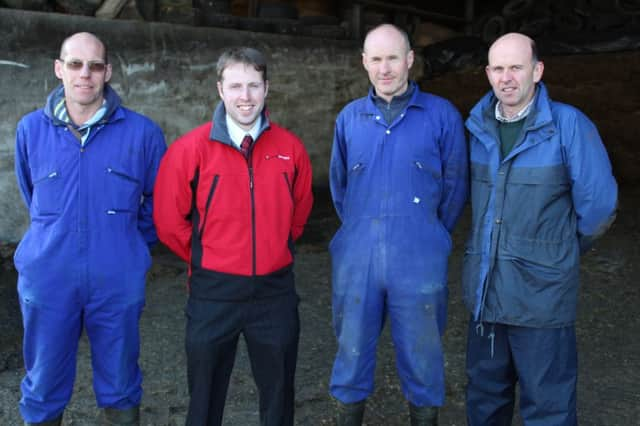Newry BDG visits dairy farm


The focus of the event was a discussion on the impact of lameness within dairy herds, the use of locomotion scoring to assess the scale of the problem and the relevance of foot bathing as a lameness control measure.
The visiting farmers were told that lameness is, fundamentally, a welfare issue which has a direct bearing on cow performance. For example, a severe case in the first month of lactation can reduce 305-day milk yield by 350 kilos.
Advertisement
Hide AdAdvertisement
Hide AdLameness will also reduce fertility levels. The overall cost of a lameness case is £323 per cow. This figure takes account of both direct and indirect costs.
The necessity of early detection, where lameness problems are concerned, was emphasised. The benefit of lameness scoring cows on a regular basis was specifically highlighted. The farmers attending were advised to mobility score their herds at least once a month. It is crucially important to prevent cows from going lame in early lactation.
Regular foot bathing was highlighted as a crucially important way of controlling infectious diseases, such as digital dermatitis. The bath should be between 3m and 4m in length and set up in a way that allows for ease of filling, emptying and cleaning. Foot bathing pre and post milking are equally effective.
Footbaths should be calibrated to ensure the correct concentration of solution. They will also need topped up during milking. In terms of frequency, there is a “no one size fits all policy”. However, regular bathing – between three and seven times per week – may be necessary to control infectious diseases, including digital dermatitis and lameness.
Advertisement
Hide AdAdvertisement
Hide AdFor foot bathing to be successful, an effective antimicrobial product must be used. It is also important to foot bath dry cows and heifers.
Moore Concrete’s Jeff Haslett took part in the visit to the Buller farm. He confirmed that regular foot bathing plays a critical role in maintaining cow foot health.
“We manufacture a range of precast footbaths to meet the requirements of all dairy farms,” he said.